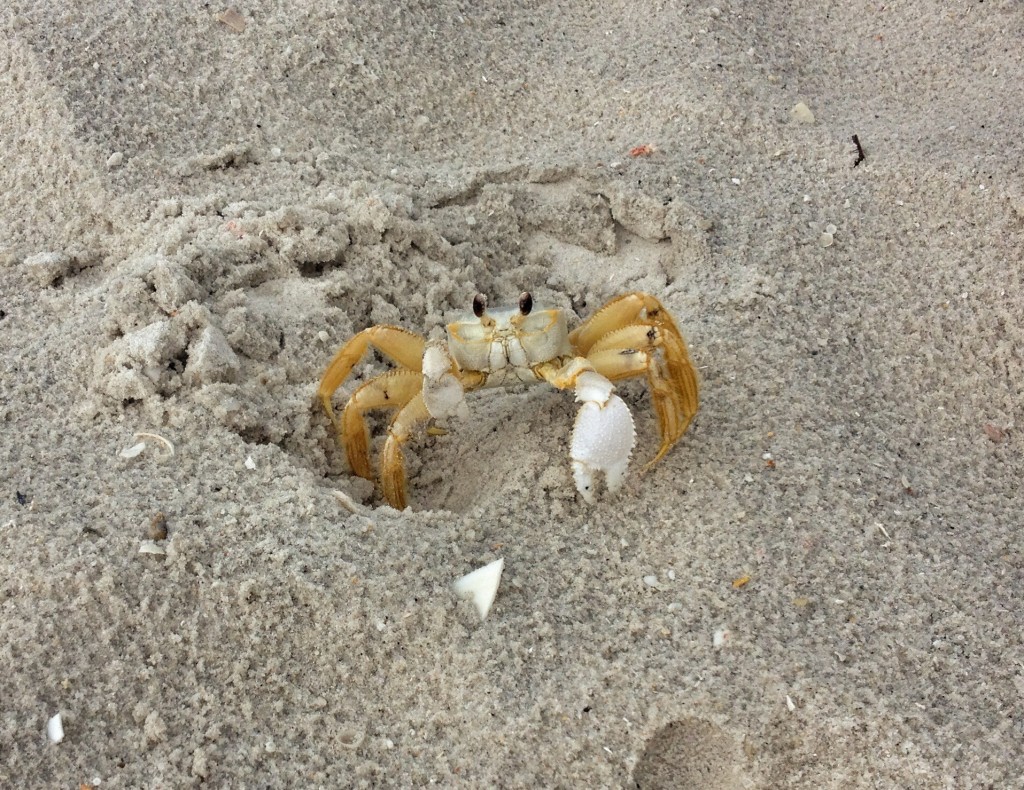Mastocytosis Flare Recovery Month 9 Day 18

Day 3 Beach Side
Today started off raining so we plan B’d it. We drove around getting the lay of the land.We traveled along the famous 30-A, a highway that connects 16 different beach side communities. We picked a few of our favorites to go back and visit later in the week. Afterwards, we checked out the place I will be staying this fall, did some shelling, and hung out on the beach.

As I was taking the top photo, this guy walked out from the grass and scared me to death. He was about 8 inches wide and was only about 12″ from me.
The rain rolled back in for the evening so Brit and I went back to the condo and watched some TV and played some games. It was a very relaxing night.
An Unexpected Surprise
Most of you know Brittany has a mast cell disease too. Her condition is vastly different from mine as she was diagnosed and treated with in a year of symptom onset while it took more than 20 years for me to be diagnosed. Obviously she lives in a mast cell friendly environment, she modifies her diet during the spring and fall flares and avoids chemicals such as preservatives, dyes, etc year round. Back in February she caught a bug of some sort and had a huge lymph node on the side of her throat. I mean huge, like a golf ball. She woke up this morning to find it was completely flat. It was a little sore but it was flat. As the day went on the soreness went away. I know mast cells often gather in lymph nodes and I know they cause inflammation. Regardless of why, I’m glad she is feeling better here as well.
Why the beach?
Several other mast cell patients have told me how much better they feel at the beach. I’m not sure why but I never put two and two together thinking this place would probably make her feel better as well. So what is it about the beach that seems to be helpful for so many? I’ve come up with a few theories but really that is all they are. I have done better in Florida, Hawaii, Southern California, & Texas Gulf Coast.
- Sand = less grass
- Palm trees vs. cedar, cottonwood, and other heavy pollinating trees
- Fresh ocean air blows away all sorts of allergens
- More Consistent temps. Here the hottest average month is July with highs in the 90’s, the coolest month is January with highs in the 70’s. Oklahoma highs in the summer typically reach over 100, some years in the 110’s winter highs may be in the 20’s or less. The swing in temperature is very challenging.
- Less agricultural use of chemicals
- More rain helps keep the air clear
Update
- Feeling better, not great yet but better
- Effects of recent reactions slowly resolving
- Loving not wearing a mask outside!
Christal
Carol Barker liked this on Facebook.
Amy Boxberger liked this on Facebook.
Michael Gunter liked this on Facebook.
Jeanne Lehman liked this on Facebook.
Paula Pilates Koehn liked this on Facebook.
Renee Moosdorf liked this on Facebook.
The crab wasn’t afraid to jump out at you because he knew you wouldn’t eat him!
Crystal Barlow liked this on Facebook.
Nicole Smith liked this on Facebook.
Nicole Shields Smith liked this on Facebook.
Jeanne Bugg liked this on Facebook.
Cindy Sullivan Kietzman liked this on Facebook.
JoAnn Bohannan Wright liked this on Facebook.
I love the beach for other reasons, but am sososo very thankful that it is good for you both. XO!
Why does it make me smile and happy to know how much better you do at the beach? 🙂 — cant wait to see you!!!!!!!!!!!!!
Jenni Unruh Groves liked this on Facebook.
Keron Showalter liked this on Facebook.
Deborah Cooper Boxberger liked this on Facebook.
Loretta Hart liked this on Facebook.
Claudine Henry liked this on Facebook.
Clara Joan Hicks Harrison liked this on Facebook.
I’m so glad you are enjoying the beach and feeling better! 🙂
Caryn King Adams liked this on Facebook.
wonderful update on your condition… encouraging…. inspiring.